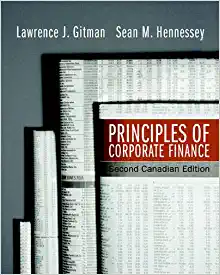Question
1. The slope of the security market line, which is the difference between the expected return on a market portfolio and the risk-free rate, is
1. The slope of the security market line, which is the difference
between the expected return on a market portfolio and the
risk-free rate, is called the
A. market risk premium.
B. portfolio variance.
C. arithmetic average return.
D. cost of capital.
2. A stock with a beta coefficient () of 2.0 has
A. one-tenth of the risk of an average asset.
B. the same systemic risk as an average asset.
C. one-half the systemic risk of an average asset.
D. twice as much systemic risk as an average asset.
3. In a market, when all information of every kind is reflected
in stock prices, the market is said to be
A. weak form efficient.
B. geometrically efficient.
C. strong form efficient.
D. average return efficient
4. Suppose that you purchased 200 shares of a stock at $46 per share (ignore all commissions). Assume the stock paid a dividend of $1.20 per share for the year. The stock price rose to $52.78 per share, and was then sold at that price. What was the total amount of dividends received? A. $120 B. $240
C. $9,200
D. $1,356
5. The term diversifiable risk is synonymous with which of the following? A. Risk premium B. Unsystematic risk
C. Systematic risk
D. Total risk
6- The average compound return earned per year over a multiyear period is called the A. arithmetic average return. B. normal distribution.
C. geometric average return.
D. standard deviation.
The average compound return earned per year over a multiyear period is called the A. arithmetic average return. B. normal distribution.
C. geometric average return.
D. standard deviation.
7- Which of the following is the formula used to describe the components of a risk premium? A. risk premium = expected return + projected return B. total returns = expected return + unexpected return C. unexpected returns = systematic portion + unsystematic portion D. risk premium = expected return - risk-free rate
8- Suppose that you purchased 300 shares of a stock at $35 per share (ignore all commissions). Assume the stock paid a dividend of $1.45 per share for the year. The stock price rose to $42.50 per share, and was then sold at that price. What was the total dollar return? A. $12,750 B. $2,685
C. $2,250
D. $435
9-The concept that asserts that well-organized capital markets, such as the NYSE, are efficient is called the A. geometric average return. . B. normal distribution.
C. efficient markets hypothesis
D. standard deviation.
10-The percentage of a portfolio's total value placed in a particular investment is called the A. portfolio weight. B. beta coefficient.
C. portfolio variance.
D. systematic risk.
11- The positively sloped straight line that shows the relationship between expected return and the beta coefficient is called the A. frequency distribution. B. bell curve.
C. geometric average return.
D. security market line.
12- Assume you purchased 150 shares of a stock at $18 per share (ignore all commissions). The stock paid a dividend of $0.75 per share for the year. What is the total cost of the stock? A. $112.50 B. $2,812.50
C. $1,800
D. $2,700
13- A high degree of uncertainty about the future for a firm is likely to lead to A. greater variability in the firm's stock price. B. lower variability in the firm's stock price. C. a lower variance and standard deviation. D. less volatile returns on the stock.
14-The equation of the security market line that shows the relationship between expected return and beta is called the A. security market beta line. B. unsystematic risk equation. C. principle of diversification. D. capital asset pricing model (CAPM).
15-. The minimum required return on a new investment is called the A. average return. C. beta coefficient. B. cost of capital.
C. beta coefficient.
D. risk premium.
16-The return earned in an average year over a multiyear period is called the A. normal distribution. B. geometric average return.
C. arithmetic average return.
D. standard deviation.
17-. Which of the following is the formula used to calculate the total return on a stock? A. Total Return = Expected Return + Unexpected Return B. Total Return = Unexpected Return + Stock Price C. Total Return = Stock Price Number of Shares D. Total Return = Dividend Number of Shares
18-The concept of spreading an investment across a number of assets to eliminate some (but not all) of the risk is called the A. systematic component of return. B. portfolio variance.
C. principle of diversification.
D. beta coefficient.
19. Suppose that you purchased 100 shares of a stock at $28 per share (ignore all commissions). Assume that the stock paid a dividend of $1.40 per share for the year. The stock price rose to $34.65 per share, and was then sold at that price. What was the total amount of the capital gain (or loss)? A. $2,800 B. $665
C. $140
D. $3,465
20-When you move from a risk-free investment to a risky investment, the excess return required on the risky investment is called a A. risk premium.
B. portfolio weight.
C. frequency distribution.
D. portfolio variance.
Step by Step Solution
There are 3 Steps involved in it
Step: 1

Get Instant Access to Expert-Tailored Solutions
See step-by-step solutions with expert insights and AI powered tools for academic success
Step: 2

Step: 3

Ace Your Homework with AI
Get the answers you need in no time with our AI-driven, step-by-step assistance
Get Started


